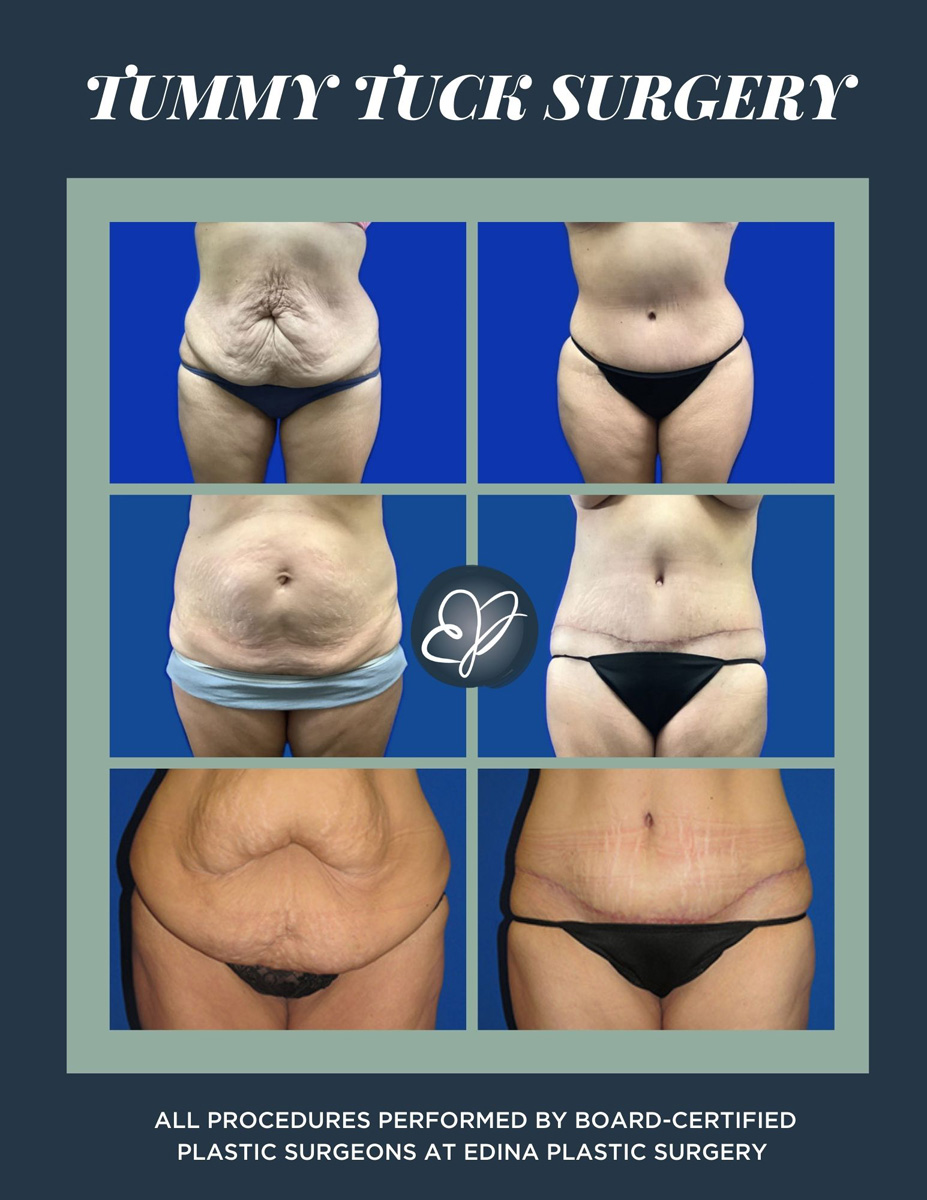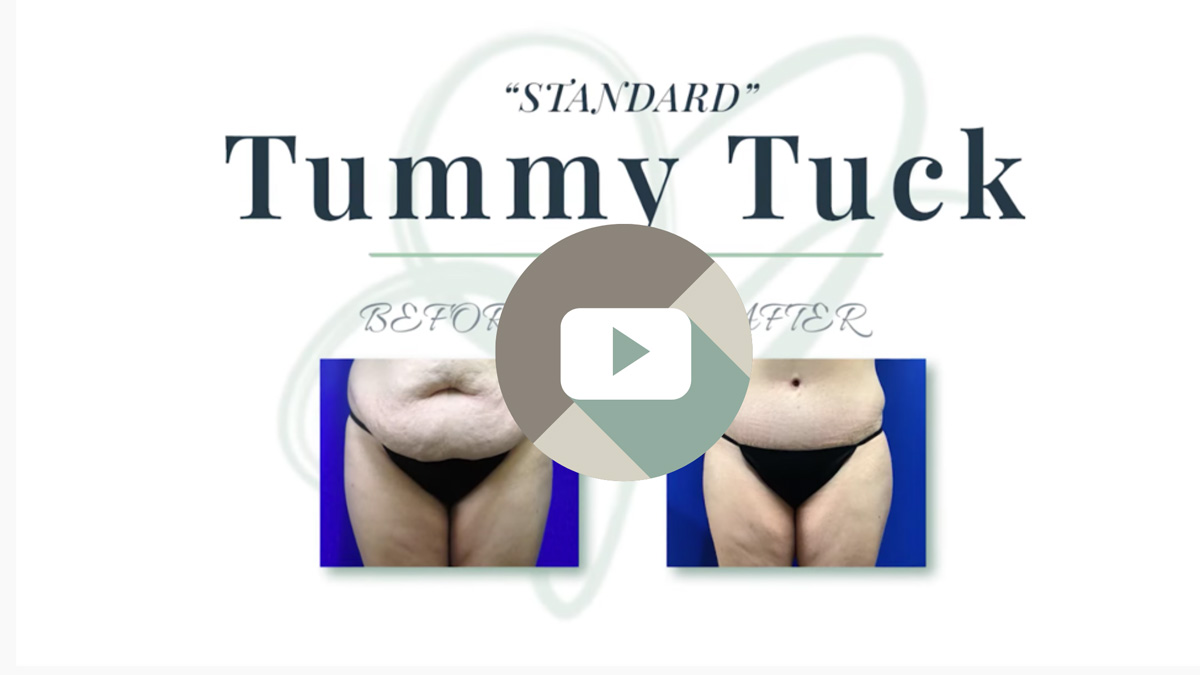Tummy Tuck, or Abdominoplasty, is one of the most popular plastic surgeries in the world. But this by no means suggests that it is a simple procedure that requires little to no downtime. As is the case with any surgery, the skill and experience of your plastic surgeon are only part of the equation that ensures the success of your results. How strictly you adhere to your procedure’s post-care instructions and the planning and effort you invest in your recovery can all play a pivotal role in your final Tummy Tuck result. If you are considering removing excess skin and tightening your midsection with an Abdominoplasty, here is a timeline of what your recovery may be like and tips to make it easier!

Immediately After Your Tummy Tuck Surgery
When you wake from anesthesia after Tummy Tuck surgery, your incisions will be bandaged and dressed, and your core will be secured with a compression garment. Depending on the type of Tummy Tuck your plastic surgeon has performed (mini, standard, or extended), you may also have small drainage tubes placed along your incisions to help drain fluid that accumulates under the abdominoplasty flap.
The First 72 Hours After Tummy Tuck Surgery
The first several days after your surgery will be the most uncomfortable. You will have very limited mobility and will need assistance from others in your home to complete everyday tasks like cooking, visiting the restroom, and getting in and out of bed. Movements such as bending, lifting, and even standing may feel uncomfortable and difficult. It is not unusual to have to walk bent over or to be unable to lay flat for even a couple of weeks after surgery. Many patients may sleep in a recliner, reclining bed, or use a wedge to help maintain some flexion while resting. You will have several restrictions on how much you can lift and instructions on specific movements to avoid during this time.
It is common to experience pain, tenderness, and bruising for two weeks (sometimes more) after surgery. Your plastic surgeon will have already supplied you with any pain prescriptions, antibiotics, and/or anticoagulants they advise for your recovery. Follow the specific instructions your surgeon provides for taking these. You will also transition to an abdominal compression garment that can help reduce swelling and relieve some discomfort. Drains will be removed usually 1-2 weeks after surgery at your surgeon’s discretion. This is often based on the output of the drains over a 24 hour period. Your first follow-up appointment will usually be 24-72 hours after surgery.
Many activities are off-limits the first week after Tummy Tuck surgery. You will need a support network of family and friends to assist you. Plan ahead to account for these restrictions, which include driving, exercise, work, everyday chores, lifting small children and pets, smoking, and drinking alcohol.
Tips
- Take it easy, but do not stay in bed all day. This can increase your risk of blood clots after surgery. Make it a point to get up and walk around the house or do foot pumps to maintain circulation.
- Stay slightly bent at your waist to avoid putting strain on incisions.
- Stick to a light, low sodium diet to reduce swelling and inflammation.
- Drink plenty of water to help flush out your system and aid in healing.
- Increase your fiber intake to decrease straining during bowel moments which may cause discomfort in your abdominal area and pull at incisions. Some patients may have to start a regimen of over the counter bowel medicines while taking narcotics after surgery, which can cause constipation.
- Be diligent about wearing your compression garments as they will aid in healing and help you achieve your desired contour.
- Wait to shower for 2-3 days after surgery and opt for a sponge bath if standing in the shower makes you feel lightheaded. Avoid completely submersion of incision in a bathtub.
1-3 Weeks After Your Tummy Tuck Surgery
Your second follow-up appointment with your plastic surgeon generally occurs 7-10 days after your surgery. They will assess whether or not to remove your bandages and advise you on how long they would like you to wear compression garments. At 2-3 weeks, you should already begin to notice a change in the shape and contour of your stomach area.
Most people return to work two weeks after their Tummy Tuck surgery unless their job requires heavy lifting or continuous standing or bending. If you have had other procedures performed with your Tummy Tuck, like a Breast Lift or Liposuction, your timeline may also be pushed out for returning to work. Exercise beyond light walking is also not recommended until 3-4 weeks after surgery to avoid complications. You will also be required to abstain from weight lifting until four to six weeks after your Tummy Tuck.
Although you will still have swelling 2-3 weeks after a Tummy Tuck, it should be significantly reduced. Pain, bruising, and any feelings of tightness in your midsection will also begin to subside at this time in your recovery.
Tips
- Although you can return to your regular diet, continue to limit your sodium intake and increase your water intake.
- Begin to lightly massage your incision sites and midsection two weeks after surgery to promote healing.
- Around two weeks, your plastic surgeon may advise you to begin a scar treatment protocol that includes the topical application of ointments and/or silicone scar gel.
- Continue to wear your compression garments under the advisement of your plastic surgeon.
- Begin taking short walks a few times throughout the day to increase blood flow and circulation, which will enhance your healing.

1-3 Months After Tummy Tuck Surgery
It is normal to still experience slight swelling in the months following your Tummy Tuck. Many patients will notice their swelling is minimal at the beginning of the day and then will increase throughout the day with activity. This will go away, usually 6 months to a year after surgery. Many patients also experience residual numbness, a pulling sensation, and slight bruising in the abdominal area. Some may experience occasional sharp pains that are quick to come on and quick to resolve, while the muscle is healing or as nerves start to regenerate. Although your incisions will be healed by this time, they may still appear red and raised. They will flatten and smooth significantly over the next few months.
For most patients, it is safe to resume normal activities 4-8 weeks after a Tummy Tuck. Phasing in weight training will come at the discretion of your plastic surgeon, as the lifting actions involved may place undue strain on healing abdominal muscles.
Tips
- Maintain a healthy, well-balanced diet and aspire to stay in your ideal weight range to protect your results.
- Avoid exercises that target abdominal muscles, like planks, and weight lifting until you get the OK from your plastic surgeon.
One Year After Your Tummy Tuck Surgery
Your abdominal area should be fully healed one year after Tummy Tuck surgery. With swelling and inflammation out of the picture, most patients see their final visual results from their surgery. Incision scars should be faded significantly at this time and are easily hidden by clothing.
Tips
- Maintain a healthy, nutritious diet that you enjoy to stay within your ideal weight range, protect your investment, and enhance your surgical results
- Incorporate a weight training program that keeps you active and your muscles strong, especially in your midsection
- Enjoy buying new clothes that accentuate your new contours and curves!
Are you interested in learning more about Tummy Tuck surgery? If so, consider scheduling a complimentary consultation with one of the board-certified plastic surgeons at Edina Plastic Surgery. Start the process by calling (612) 688-3177, texting (952) 925-1765, or CLICKING HERE.



